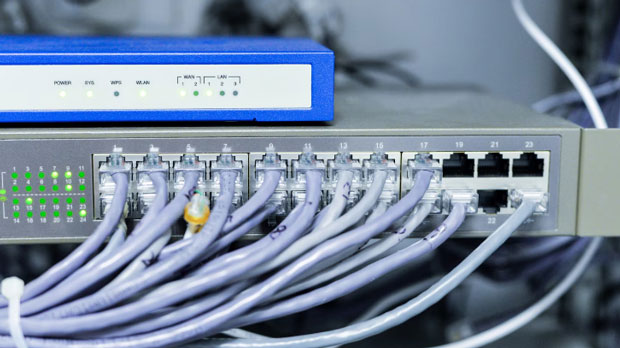Choosing a high-speed and stable online proxy is essential for anyone who values privacy, security, and internet performance. Whether you're trying to access restricted content, ensure secure browsing, or improve your browsing speed, selecting the right proxy is a critical task. However, with the plethora of proxy services available today, the process can become overwhelming. In this article, we’ll guide you through key considerations and steps to select the best online proxy for your needs. By analyzing the factors that affect proxy performance and reliability, you can make an informed decision that enhances your online experience. 1. Understanding the Basics of Online ProxiesBefore diving into the specifics of selecting the right proxy, it's important to understand the basics of how online proxies work. A proxy server acts as an intermediary between your device and the internet. When you use a proxy, your internet traffic is routed through the server, masking your IP address and allowing you to access content anonymously. Proxies can serve different purposes, such as bypassing geographic restrictions, ensuring privacy, or improving connection speed.Proxies come in various types, including HTTP, HTTPS, SOCKS, and others. Each type has different benefits, and choosing the right one depends on your specific requirements. For instance, HTTPS proxies offer encrypted connections, making them suitable for secure browsing, while SOCKS proxies offer greater flexibility in terms of the types of connections they support.2. Speed and Latency: Key Factors for Proxy SelectionOne of the primary considerations when choosing an online proxy is speed. A slow proxy can result in lag, buffering, and an overall poor browsing experience. To ensure fast internet access, it's crucial to choose a proxy with low latency and high-speed capabilities.Several factors influence the speed of a proxy server. The distance between your device and the proxy server plays a major role; the closer the server, the faster the connection. Additionally, the number of users sharing the proxy server can impact speed. A highly trafficked server may experience congestion, leading to slower speeds. Therefore, it's advisable to choose a proxy provider with a reliable network of servers spread across various geographical locations to minimize congestion and optimize speed.3. Stability and ReliabilityIn addition to speed, stability and reliability are crucial when selecting an online proxy. A stable proxy ensures uninterrupted service, minimizing downtime or connection failures. For users who rely on proxies for business or sensitive activities, reliability is especially important.To gauge the stability of a proxy, consider the provider's uptime guarantee. A trustworthy proxy service will offer high uptime, typically around 99.9%, indicating that the service is dependable. Additionally, reliable proxy services should offer 24/7 customer support to assist with any issues that may arise during use.4. Proxy Location and Geographical DiversityThe location of the proxy server can significantly impact both the speed and the ability to bypass regional restrictions. If you're looking to access content that is only available in a specific country, choosing a proxy server in that country is necessary. For example, if you need to access content available in the United States, selecting a proxy server located within the U.S. will help you appear as though you are browsing from that location.A diverse network of proxy servers across multiple regions provides flexibility and the ability to access geo-restricted content. Opting for a provider with a wide range of server locations ensures that you can choose the optimal server for your needs.5. Security and Privacy FeaturesSecurity and privacy are among the most important factors when choosing a proxy, especially for users who are concerned about their online footprint. A secure proxy should offer encryption, which protects your data from being intercepted while traveling through the server. This is particularly crucial when browsing sensitive websites or accessing accounts.Additionally, a good proxy service should have a strict no-logs policy. This ensures that the proxy provider does not keep track of your online activities, providing greater anonymity. Some proxies also offer extra layers of security, such as IP rotation, which further enhances privacy by regularly changing your IP address.6. Compatibility with Your DevicesNot all proxies are compatible with all devices or platforms. When selecting a proxy service, ensure that it supports the devices and operating systems you intend to use. Many proxies are compatible with desktop browsers, but if you're planning to use a proxy on a mobile device, ensure that the service offers dedicated apps or easy configuration for mobile platforms.Some proxies may also support a wide range of applications beyond browsing, including gaming, streaming, or torrenting. Depending on your needs, check whether the proxy is optimized for these specific use cases.7. Cost vs. QualityWhile free proxies may seem like an attractive option, they often come with limitations in terms of speed, security, and reliability. Additionally, free proxy services are more likely to track your online activities and inject ads into your browsing session, compromising privacy.Paid proxies, on the other hand, offer better performance, security, and customer support. When choosing a paid proxy, compare different pricing plans and the services they offer. Keep in mind that the cheapest option may not always be the best choice. Look for a provider that balances cost with the quality of service.8. Customer Support and User ReviewsThe quality of customer support provided by a proxy service can significantly affect your experience. Reliable customer support ensures that any issues or concerns you encounter during use are addressed promptly. Look for a proxy provider that offers multiple support channels, such as live chat, email, or phone support.User reviews are another valuable resource when selecting a proxy service. Reviews from other users can provide insights into the reliability, speed, and overall quality of the service. Be sure to check independent review sites and forums to get an unbiased view of the provider's performance.Conclusion: Making an Informed ChoiceChoosing the right online proxy requires careful consideration of factors such as speed, stability, security, and compatibility. By evaluating different proxy services based on these criteria, you can find a solution that meets your specific needs. Remember, the best proxy is not necessarily the one with the lowest price but the one that provides the best combination of performance, security, and reliability. With the right proxy, you can enjoy faster browsing speeds, enhanced privacy, and seamless access to content across the web.
Jul 10, 2025


































































